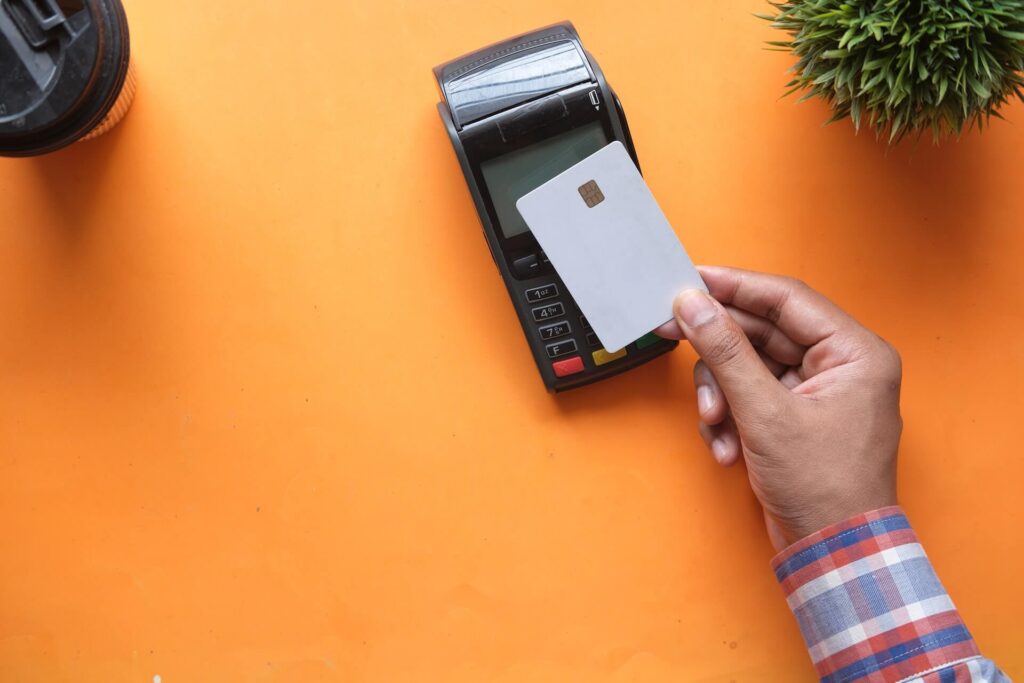Updated on December 22, 2023 by Lou Mac
“How much” in Spanish is one of a handful of phrases that you must know in order to navigate life and travel in the Spanish-speaking world.
In this post we’ll go over exactly how to ask how much something costs in Spanish, and a few different ways of asking it—if you’re feeling like a challenge!
Let’s get started.
How Do You Say “How Much Does it Cost?” in Spanish?
¿Cuánto cuesta? – How much does it cost?
Simply put, “How much does it cost?” in Spanish is ¿Cuánto cuesta? If you’re going to remember just one thing from this post, let it be this!
Cuesta comes from the verb costar, which means “to cost.” Because of this, we use cuesta when talking about a single item.
Buen día, ¿cuánto cuesta un pasaje a Santiago? (Good morning, how much is a ticket to Santiago?)
¿Cuánto cuesta esa torta? (How does that cake cost?)
¿Cuánto cuestan? – How much do they cost?
If you’re asking how much more than one thing costs then we just make a tiny change to the phrase above—we simply add an n to cuesta to form cuestan.
This is because costar conjugated to talk about something in plural is cuestan.
Buen día, ¿cuánto cuestan los pasajes a Santiago? (Good morning, how much are the tickets to Santiago?)
¿Cuánto cuestan las empanadas de queso? (How much are the cheese empanadas?)
How to Pronounce ¿Cuánto Cuesta?

¿Cuánto cuesta? is pronounced:
kwan-to kwes-ta
Note that the syllables in bold are stressed!
Check out this link to hear it pronounced by a Spanish speaker from Spain and a Spanish speaker from Latin America. The difference is actually minimal, unlike many other Spanish words!
Conjugating the Verb Costar

If the word “conjugation” has you scratching your head, it might be worth checking out this post on verb conjugation for beginners that we linked earlier. You’ll also find our free Beginner’s Guide to Self-Learning Spanish useful—there’s 20+ pages packed full of tips and advice for people trying to learn Spanish on their own.
If you’re familiar with verb conjugation however, let’s quickly run over the different verb conjugations for costar, so that you’re able to talk about how much things cost in different tenses!
For the sake of efficiency we’ll just cover conjugations for it/they, but you can find the full conjugations here.
Present tense conjugation of costar
- Cuesta — it costs
- Cuestan — they cost
Preterite conjugation of costar
- Costó — it cost
- Costaron — they cost
Past imperfect tense conjugation of costar
- Costaba — it used to cost
- Costaban — they used to cost
Future tense conjugation of costar
- Costará — it will cost
- Costarán — they will cost
Conditional conjugation of costar
- Costaría — it would cost
- Costarían — they would cost
Other Ways of Asking How Much Something Costs in Spanish

If ¿Cuánto cuesta? is too easy for you – or you’re just keen to improve your Spanish – here are some other ways you can say it!
¿Cuánto es? – How much is it?
This phrase uses the verb ser (to be), and literally translates to “How much is it?” Personally I prefer the classic cuanto cuesta, but this phrase is perfectly acceptable too.
To make the phrase a plural, simply swap the es for son: ¿Cuántos son? — how much are they?
Me gusta este polerón. ¿Cuánto es? — I like this sweatshirt. How much is it?
¿Cuánto vale? – How much is it worth?
This phrase comes from the verb valer, which means “to be worth.” So while you’re technically asking how much something is worth, it’s also another way of asking someone how much something costs.
You can also say ¿Cuánto valen? which means “How much are they worth?”
¿Cuánto valen las entradas al partido? — How much are the tickets to the match?
¿Cuánto sale? – How much is it?
This commonly used phrase uses the verb salir ( to go out, to leave, to get out), and translates to something like “how much is it,” or “how much does it come to”.
It will make your Spanish sound really natural, but just be aware that it’s a little informal.
Voy a pagar con efectivo. ¿Cuánto sale? — I’m going to pay in cash. How much is it?
¿Cuántos dolares son? – How many dollars is it?
If you want to ask about a specific currency you can just add in dolares (dollars), or whatever currency you’re referring to.
¿Usted sabe cuántos dolares son? — Do you know how many dollars it is?
Learning Numbers in Spanish

Of course, it wouldn’t be very effective to learn how to ask how much something cost without learning a bit about what to expect in response.
Most likely your reply will be sort of number, so you’ll need to learn the very basics at least!
But if you’re going to be travelling, you may actually need to learn more than just the basics. For example if you travel to a country like Chile, where 1 peso is worth (at the time of writing) 0.0011 USD, you’ll need to be able to say and understand large numbers because everything will be worth 500+ pesos.
It can be a bit of a shock arriving and spending $4,500 CLP on two completos (a popular sort of Chilean hot dog)!
Spanish Numbers 1 – 20
Numbers 1 – 20 are what most people learn as beginners – and to be honest, they’re probably the hardest numbers to remember! So let’s get these out of the way:
- Uno
- Dos
- Tres
- Cuatro
- Cinco
- Seis
- Siete
- Ocho
- Nueve
- Diez
- Once
- Doce
- Trece
- Catorce
- Quince
- Dieciséis
- Diecisiete
- Dieciocho
- Diecinueve
- Veinte
Spanish Numbers up to 100
Now that we can count to 20, counting up to 100 is pretty straightforward! Like in English, we just need to learn the different multiples of 10, and then add a smaller number (from 1 – 9) if needed.
For example: in English to say the number 36, we literally say “thirty six.” In Spanish we take the word treinta (thirty), add y (and) and seis (six), which ends up as treinta y seis.
30. Treinta
40. Cuarenta
50. Cincuenta
60. Sesenta
70. Setenta
80. Ochenta
90. Noventa
100. Cien
Spanish Numbers up to 1000
Next we’ve got counting in the hundreds! These are pretty straightforward – they mostly use the numbers 2 – 9 and add cientos, with a few slight differences.
200. Doscientos
300. Trescientos
400. Cuatrocientos
500. Quinientos
600. Seiscientos
700. Setecientos
800. Ochocientos
900. Novecientos
1000. Mil
Spanish Numbers 1000 and beyond
The word for thousand is mil. It’s nice and simple, but can also be a little confusing because it’s similar to the word “million.”
As with the other numbers we’ve seen today, to count up in thousands we just use numbers that we’ve already learned, and add mil.
To speak more complex numbers, you can just take everything you’ve learned here and mash it together—pretty much the same as we do in English. For example:
2,335 would be two thousand three hundred and thirty five in English. In Spanish its dos mil trescientos treinta y cinco.
For a comprehensive guide on numbers, check out this post by Fluent in 3 Months.
More Spanish Shopping Vocabulary

To finish things up we’re going to have a look at a few more shopping-related phrases that’ll help you when you’re roaming the markets or spending it up at the mall.
Estoy buscando… — I’m looking for…
Hola! Estoy buscando algo para regalar a mi novio. — Hi! I’m looking for something to gift to my boyfriend.
¿Dónde puedo comprar…? — Where can I buy…?
¿Usted sabe dónde puedo comprar buen vino? — Do you know where I can buy good wine?
Sólo estoy mirando, gracias — I’m just looking, thanks
¿En qué le puedo ayudar? — What can I help you with?
Nada, sólo estoy mirando, gracias! — Nothing, I’m just looking thanks!
¿Tiene…? — Do you have…?
Tiene remedios para el dolor de la cabeza? — Do you have medication for headaches?
¿Aceptan tarjetas de crédito? — Do you take credit cards?
No tengo efectivo, ¿aceptan tarjetas de crédito? — I don’t have cash, do you take credit cards?
And there we have it!
Now that you’ve learned to ask how much something costs, you might need to know how to order food in Spanish.
Good luck, and safe travels.

